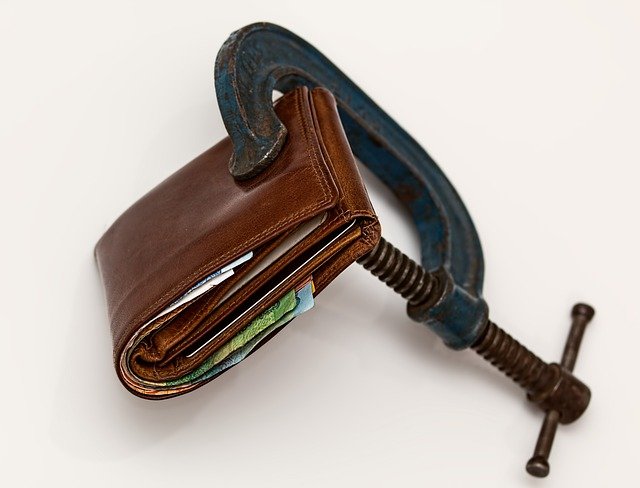How micro-transfers can accelerate a safety cushion
Micro-transfers—small, regular amounts moved into a separate account—can make saving more manageable and sustainable. By breaking savings into tiny, automated transfers that match cashflow and expenses patterns, people can build an emergency buffer without large upfront sacrifices. This article explains practical steps, budgeting links, and tracking tips to grow a safety cushion over time.

Micro-transfers—tiny, regular movements of cash into a designated account—can help people build a safety cushion without large, disruptive changes to monthly budgets. Instead of waiting to accumulate a lump sum, microsavings strategies spread transfers across pay periods and everyday transactions, allowing goals to be met through steady habit formation. This approach can reduce the psychological friction of saving while improving resilience for emergencies and seasonal shifts in income or expenses.
What are microsavings and transfers?
Microsavings are small contributions made frequently—often cents to a few dollars per transfer—into a dedicated savings account. Transfers can be scheduled after each purchase, on paydays, or at daily/weekly intervals. Because each transfer is minor, they usually have minimal impact on immediate cashflow, yet they compound over weeks and months. The key is choosing a transfer cadence aligned with income and expense rhythms so that savings feel sustainable rather than forced.
How does budgeting influence micro-transfers?
Effective budgeting identifies where small adjustments can be made without affecting essential expenses. Once fixed bills and basic spending are accounted for, a portion of discretionary spend can be redirected into microsavings. For example, trimming a streaming service, reducing takeout by one meal a week, or shifting rounding-up spare change can free up consistent amounts for transfers. Budgeting also helps set realistic savings goals and prevents transfers from causing short-term cash shortages.
How can automation support consistent savings?
Automation is central to turning micro-transfers into an enduring habit. Automatic transfers scheduled to coincide with paydays or recurring income reduce decision fatigue and the temptation to skip saving. Many banks and apps offer round-up features that convert change from card transactions into transfers; others let users set fixed micro-amounts at chosen intervals. By automating, individuals ensure continuity even during busy periods, making savings more reliable and predictable.
What role does tracking play in meeting goals?
Tracking progress makes abstract goals tangible and helps maintain motivation. Simple tools—an account ledger, spreadsheet, or a savings app—show cumulative transfers, current balance, and distance to the emergency target. Regular reviews help spot seasonal dips in cashflow or spikes in expenses, allowing adjustments to transfer sizes or timing. Tracking also supports goal-setting by showing how small transfers add up, which reinforces the behavior and helps refine budgeting choices.
How to plan for emergency needs and seasonality?
A safety cushion should account for emergencies and predictable seasonal variations in income or expenses. Micro-transfers can be increased ahead of known seasonal costs (holidays, taxes, annual insurance) and scaled back during lean months. Keeping a tiered target—first a small buffer for short-term shocks, then a larger emergency fund—lets people prioritize transfers based on likelihood and impact. Align transfers with income seasonality so they flow when cashflow is strongest and pause or reduce them when required.
How do transfers interact with repayments and other obligations?
Micro-transfers should never jeopardize the ability to meet repayments or essential expenses. When debt repayments are a priority, consider allocating a modest portion to savings while still addressing high-cost debt. For those repaying loans, a parallel strategy can be useful: maintain a minimal microsavings buffer to cover unexpected minor expenses while directing larger extra payments at high-interest repayments. Clear tracking and periodic reassessment ensure transfers remain balanced with liabilities and cashflow demands.
Putting micro-transfers into practice
Start by setting a clear, time-bound savings goal—an initial emergency target of one to four weeks’ typical expenses can be realistic for many. Choose a transfer method: automated round-ups, fixed small transfers after each paycheck, or scheduled weekly deposits. Monitor how transfers affect day-to-day liquidity for the first few months and adjust amounts if cashflow feels tight. Use tracking to celebrate milestones, and revise the plan when income, seasonality, or repayments change.
Building a safety cushion through micro-transfers is a gradual, behavior-driven approach that leverages automation, steady tracking, and sensible budgeting. By aligning transfers with cashflow, accounting for seasonality, and balancing repayments, people can create a resilient buffer without major upfront sacrifices. Over time, consistent microsavings can transform small, routine actions into meaningful financial stability.





